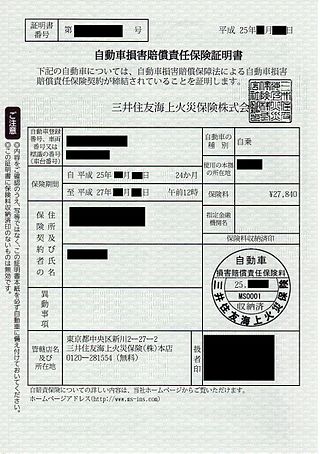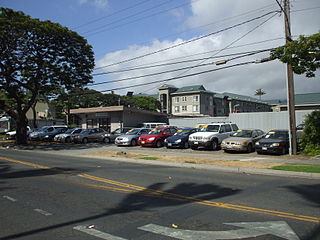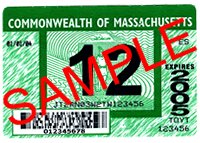
A bumper is a structure attached to or integrated with the front and rear ends of a motor vehicle, to absorb impact in a minor collision, ideally minimizing repair costs. Stiff metal bumpers appeared on automobiles as early as 1904 that had a mainly ornamental function. Numerous developments, improvements in materials and technologies, as well as greater focus on functionality for protecting vehicle components and improving safety have changed bumpers over the years. Bumpers ideally minimize height mismatches between vehicles and protect pedestrians from injury. Regulatory measures have been enacted to reduce vehicle repair costs and, more recently, impact on pedestrians.

Vehicle insurance is insurance for cars, trucks, motorcycles, and other road vehicles. Its primary use is to provide financial protection against physical damage or bodily injury resulting from traffic collisions and against liability that could also arise from incidents in a vehicle. Vehicle insurance may additionally offer financial protection against theft of the vehicle, and against damage to the vehicle sustained from events other than traffic collisions, such as keying, weather or natural disasters, and damage sustained by colliding with stationary objects. The specific terms of vehicle insurance vary with legal regulations in each region.
An extended warranty, sometimes called a service agreement, a service contract, or a maintenance agreement, is a prolonged warranty offered to consumers in addition to the standard warranty on new items. The extended warranty may be offered by the warranty administrator, the retailer or the manufacturer. Extended warranties cost extra and for a percentage of the item's retail price. Occasionally, some extended warranties that are purchased for multiple years state in writing that during the first year, the consumer must still deal with the manufacturer in the occurrence of malfunction. Thus, what is often promoted as a five-year extended guarantee, for example, is actually only a four-year guarantee.
CARFAX, Inc. is an American company that provides vehicle data to individuals and businesses. Its most well-known product is the CARFAX Vehicle History Report. Their other products include vehicle listings, car valuation, and buying and maintenance advice.
The American Association of Motor Vehicle Administrators (AAMVA) is a non-governmental, voluntary, tax-exempt, nonprofit educational association. AAMVA is a private corporation which strives to develop model programs in motor vehicle administration, police traffic services, and highway safety.

A wrecking yard, scrapyard or junkyard is the location of a business in dismantling where wrecked or decommissioned vehicles are brought, their usable parts are sold for use in operating vehicles, while the unusable metal parts, known as scrap metal parts, are sold to metal-recycling companies. Other terms include wreck yard, wrecker's yard, salvage yard, breaker's yard, dismantler and scrapheap. In the United Kingdom, car salvage yards are known as car breakers, while motorcycle salvage yards are known as bike breakers. In Australia, they are often referred to as 'Wreckers'.
In American English, a lemon is a vehicle that turns out to have several manufacturing issues affecting its safety, value or utility. Any vehicle with such severe issues may be termed a lemon, and by extension, so may any product with flaws too great or severe to serve its purpose.

A used car, a pre-owned vehicle, or a secondhand car, is a vehicle that has previously had one or more retail owners. Used cars are sold through a variety of outlets, including franchise and independent car dealers, rental car companies, buy here pay here dealerships, leasing offices, auctions, and private party sales. Some car retailers offer "no-haggle prices," "certified" used cars, and extended service plans or warranties.
A car rental, hire car or car hire agency is a company that rents automobiles for short periods of time to the public, generally ranging from a few hours to a few weeks. It is often organized with numerous local branches, and primarily located near airports or busy city areas and often complemented by a website allowing online reservations.

Vehicle inspection is a procedure mandated by national or subnational governments in many countries, in which a vehicle is inspected to ensure that it conforms to regulations governing safety, emissions, or both. Inspection can be required at various times, e.g., periodically or on the transfer of title to a vehicle. If required periodically, it is often termed periodic motor vehicle inspection; typical intervals are every two years and every year. When a vehicle passes inspection, often a sticker is placed on the vehicle's windshield or registration plate to simplify later controls, but in some countries—such as the Netherlands since 1994—this is no longer necessary. Most US inspection decals/stickers display the month's number and the year.

A flat tire is a deflated pneumatic tire, which can cause the rim of the wheel to ride on the tire tread or the ground potentially resulting in loss of control of the vehicle or irreparable damage to the tire. The most common cause of a flat tire is puncturing of the tire by a sharp object, such as a nail or pin, letting the air escape. Depending on the size of the puncture, the tire may deflate slowly or rapidly.
In North America, a salvage title is a form of vehicle title branding, which notes that the vehicle has been damaged and/or deemed a total loss by an insurance company that paid a claim on it. The criteria for determining when a salvage title is issued differ considerably by each state, province or territory. In a minority of states and Canadian provinces, regulations require a salvage title for stolen or vandalized vehicles which are not recovered by police within 21 days. In such cases insurance companies declare a vehicle total loss and pay off the previous owner; but, in others, it is issued only for losses due to damage. Under some circumstances, a salvage title denotation may be removed or replaced with a Rebuilt Salvage designation; and cars imported to, or exported from, the United States may be issued a clean title regardless of history.

In insurance claims, a total loss or write-off is a situation where the lost value, repair cost or salvage cost of a damaged property exceeds its insured value, and simply replacing the old property with a new equivalent is more cost-effective.

Auto auctions are a method of selling vehicles based on an auction system. Auto auctions can be found in most countries and are usually exclusive to licensed automobile dealers. In a few countries, such as Japan, auto auctions are well known and used by most residents.

A traffic collision, also known as a motor vehicle collision, occurs when a vehicle collides with another vehicle, pedestrian, animal, road debris, or other moving or stationary obstruction, such as a tree, pole or building. Traffic collisions often result in injury, disability, death, and property damage as well as financial costs to both society and the individuals involved. Road transport is statistically the most dangerous situation people deal with on a daily basis, but casualty figures from such incidents attract less media attention than other, less frequent types of tragedy. The commonly used term car accident is increasingly falling out of favor with many government departments and organizations, with the Associated Press style guide recommending caution before using the term. Some collisions are intentional vehicle-ramming attacks, staged crashes, vehicular homicide or vehicular suicide.
Diminished value or diminution in value are the terms generally used to describe the loss in a property's market value after it was damaged in an accident and repaired. Diminished value is most often associated with automobiles but it is applicable to other property of value including real estate or collectibles such as jewelry and artwork. If a property was damaged and repair failed to restore it to its original market value then said property has suffered diminished value.
Vehicle insurance in the United States is designed to cover the risk of financial liability or the loss of a motor vehicle that the owner may face if their vehicle is involved in a collision that results in property or physical damage. Most states require a motor vehicle owner to carry some minimum level of liability insurance. States that do not require the vehicle owner to carry car insurance include Virginia, where an uninsured motor vehicle fee may be paid to the state, New Hampshire, and Mississippi, which offers vehicle owners the option to post cash bonds. The privileges and immunities clause of Article IV of the U.S. Constitution protects the rights of citizens in each respective state when traveling to another. A motor vehicle owner typically pays insurers a monthly or yearly fee, often called an insurance premium. The insurance premium a motor vehicle owner pays is usually determined by a variety of factors including the type of covered vehicle, marital status, credit score, whether the driver rents or owns a home, the age and gender of any covered drivers, their driving history, and the location where the vehicle is primarily driven and stored. Most insurance companies will increase insurance premium rates based on these factors, and less frequently, offer discounts.
On September 26, 2011, California Governor Jerry Brown signed California Law AB 1215 into law. Authored by Bob Blumenfield, the legislation accomplished three goals: (1) increasing the fees that California car and truck dealers can charge for licensing, (2) requiring dealers to use Electronic Titling and (3) governing how automobile dealers disclose previously damaged used cars. The law went into effect on July 1, 2012.
Increases in the use of autonomous car technologies are causing incremental shifts in the responsibility of driving, with the primary motivation of reducing the frequency of traffic collisions. Liability for incidents involving self-driving cars is a developing area of law and policy that will determine who is liable when a car causes physical damage to persons or property. As autonomous cars shift the responsibility of driving from humans to autonomous car technology, there is a need for existing liability laws to evolve to reasonably identify the appropriate remedies for damage and injury. As higher levels of autonomy are commercially introduced, the insurance industry stands to see higher proportions of commercial and product liability lines of business, while the personal automobile insurance line of business shrinks.

The Ontario Automobile Policy is a regulation under the Ontario Insurance Act enacted by the Parliament of Ontario to cover financial damages to persons and property after a car crash. All private companies registered to sell auto insurance in Ontario, are required to use the OAP for their private car insurance policy. The OAP is the legal contract that connects an Ontario driver with every Ontario based insurance company.










